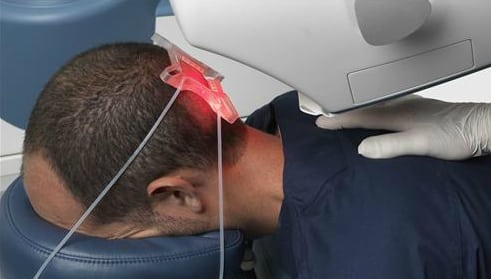In recent years, Robotic Hair Transplant in Dubai has emerged as one of the most advanced and sought-after hair restoration solutions in the world. Known for its precision, minimal invasiveness, and natural-looking results, this cutting-edge procedure has transformed how people perceive hair transplants. However, one question remains on the minds of many considering the treatment: Does it leave visible scars behind?
Understanding this concern is crucial, especially for individuals seeking seamless, confidence-boosting results. Let’s explore the truth behind scarring in robotic hair transplantation and why it has become a game-changer in modern cosmetic technology.
What Makes Robotic Hair Transplant Different?
Traditional hair transplant techniques, such as FUT (Follicular Unit Transplantation), often involved removing a strip of scalp from the donor area. While effective, this method usually left a linear scar, which could be visible if the patient preferred shorter hairstyles.
In contrast, robotic hair transplantation uses the Follicular Unit Extraction (FUE) technique, enhanced with robotic precision. Instead of removing a strip of skin, individual hair follicles are extracted one by one. The robotic system uses advanced algorithms and imaging technology to identify and harvest the healthiest grafts, ensuring accuracy and consistency that manual methods can rarely achieve.
This robotic precision minimizes trauma to the scalp, reduces the risk of human error, and ensures that scars—if any—are virtually undetectable.
Understanding Scarring in Hair Transplants
No surgical procedure is entirely scar-free, as even the smallest incision leaves some trace. However, the goal of robotic hair transplantation is to make those traces so tiny that they become practically invisible to the naked eye.
The robotic system creates micro-punctures less than 1 millimeter in diameter when extracting each hair follicle. These small holes typically heal within a few days, forming barely noticeable micro-scars that blend seamlessly with surrounding hair and skin. For most patients, the results appear completely natural—even when wearing shorter hairstyles.
In comparison to older techniques, the scarring from robotic hair transplantation is not only minimal but also evenly distributed, which helps maintain the natural texture and density of the donor area.
Why Robotic Technology Minimizes Scars
The real beauty of robotic systems lies in their unmatched precision. The robot uses real-time imaging to determine the optimal angle, depth, and direction for both extraction and implantation. This level of accuracy prevents unnecessary damage to surrounding tissues, reduces inflammation, and speeds up the healing process.
Additionally, the robot ensures that each graft is harvested uniformly, preventing clustering or over-harvesting from specific areas. This controlled approach significantly reduces the chance of visible scarring, giving the donor site a clean and uniform appearance after recovery.
Post-Procedure Healing and Scar Care
After a robotic hair transplant, proper aftercare plays an essential role in ensuring minimal scarring and optimal healing. Patients are typically advised to follow gentle scalp care routines, avoid scratching or picking at scabs, and protect their scalp from excessive sun exposure during the initial healing phase.
The small puncture sites close naturally within a few days, and any redness or minor swelling usually subsides within a week. As the hair regrows, it further conceals the donor area, making it nearly impossible to spot where the follicles were extracted.
With time, the results become indistinguishable from natural hair growth, giving the appearance of a fuller, healthier head of hair—without any visible reminders of surgery.
The Aesthetic Edge of Robotic Precision
One of the main reasons people choose robotic technology for hair restoration is its ability to create natural-looking density and hairline design. The robot’s analytical software carefully selects the ideal donor follicles and places them strategically to mimic natural growth patterns.
This not only enhances the aesthetic appeal but also ensures that the hair transplant results remain long-lasting and harmonious with the individual’s natural look. Because the process is so gentle and accurate, patients often experience quicker recovery times and greater satisfaction with their appearance.
Why People Prefer Robotic Hair Transplant Dubai
The demand for Robotic Hair Transplant Dubai continues to grow because it combines innovation, accuracy, and comfort in one seamless procedure. Dubai has positioned itself as a global hub for advanced aesthetic technology, offering patients access to state-of-the-art treatments that emphasize safety, precision, and artistry.
With robotic technology, individuals can finally say goodbye to the fear of visible scars and hello to confidence that feels—and looks—completely natural.
Final Thoughts
While no surgical procedure is entirely scar-free, robotic hair transplantation takes scar minimization to a new level. Through microscopic precision, intelligent graft selection, and rapid healing, this method ensures results that are virtually indistinguishable from natural hair growth.






Comments